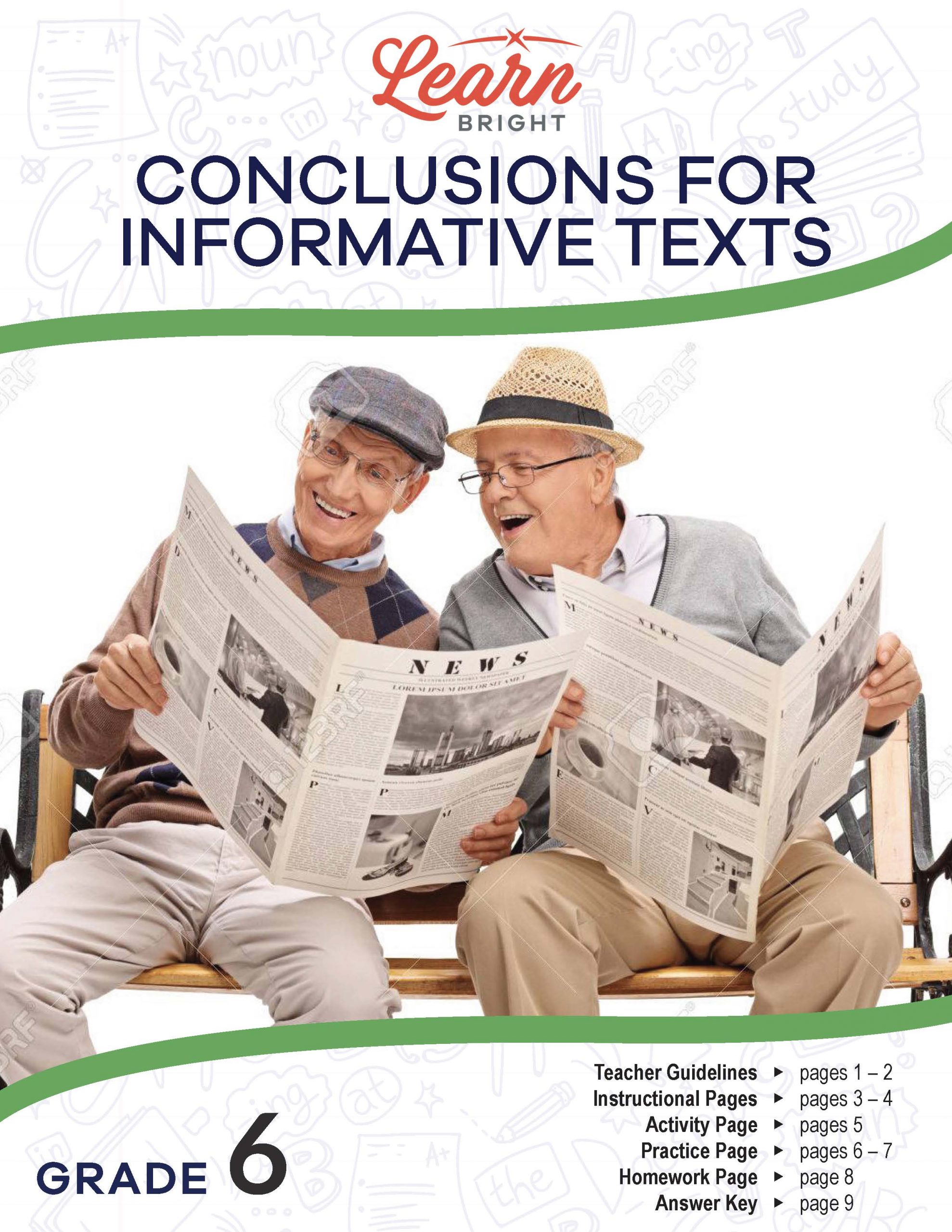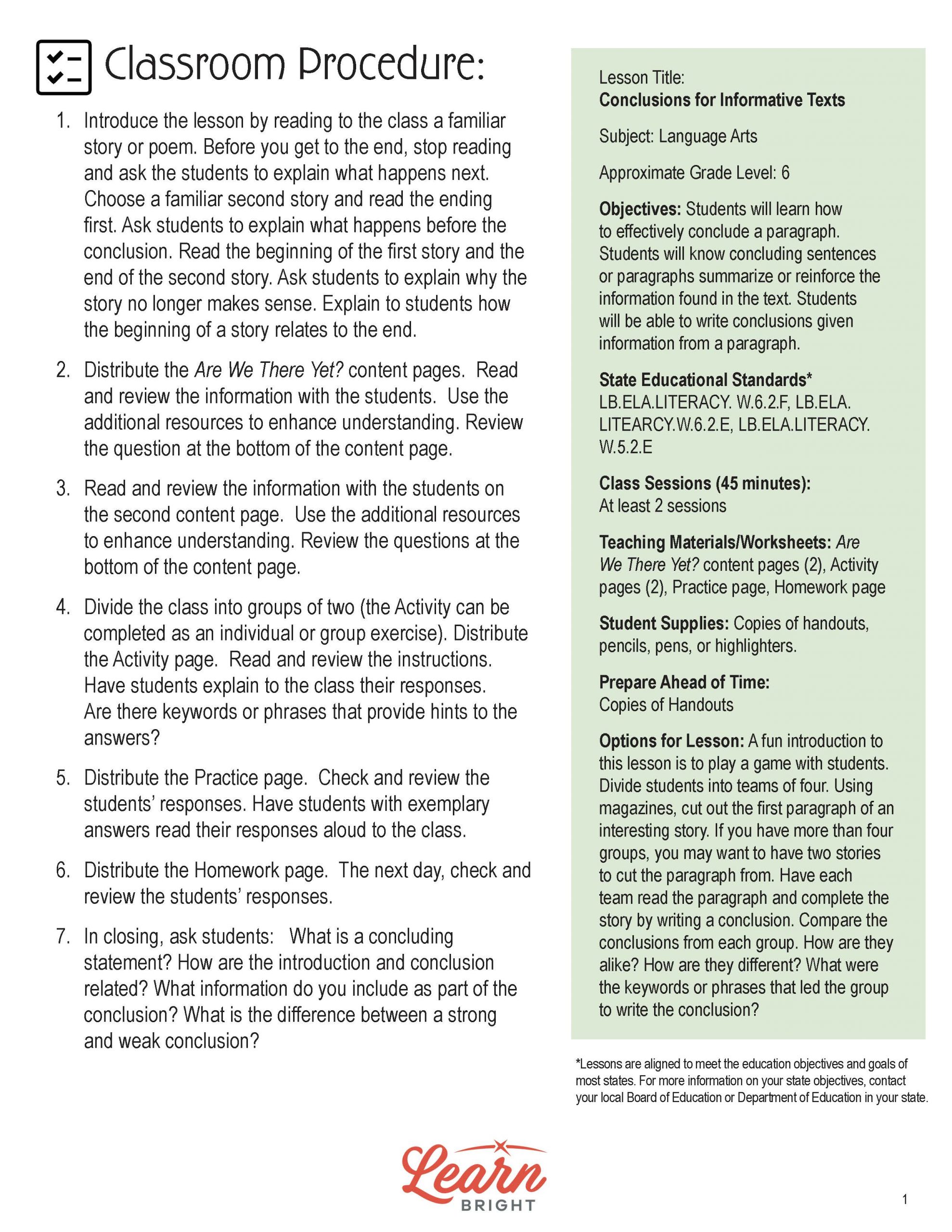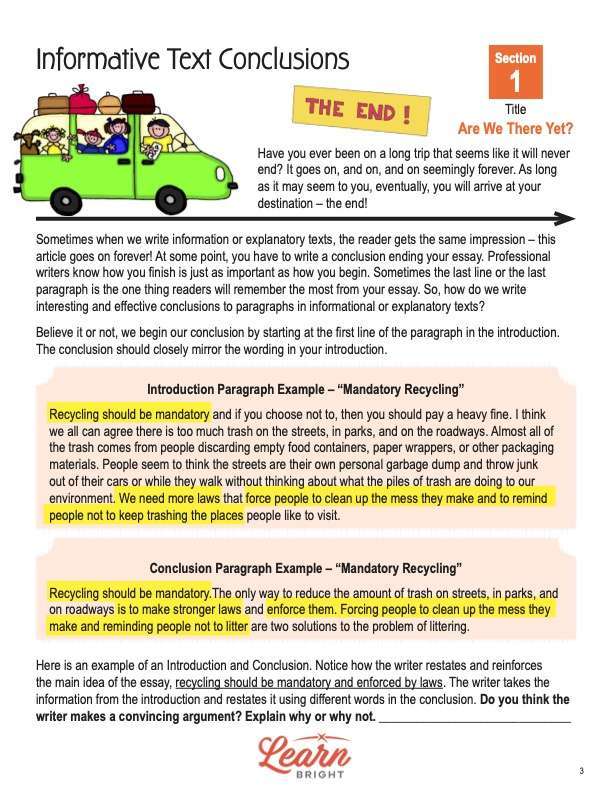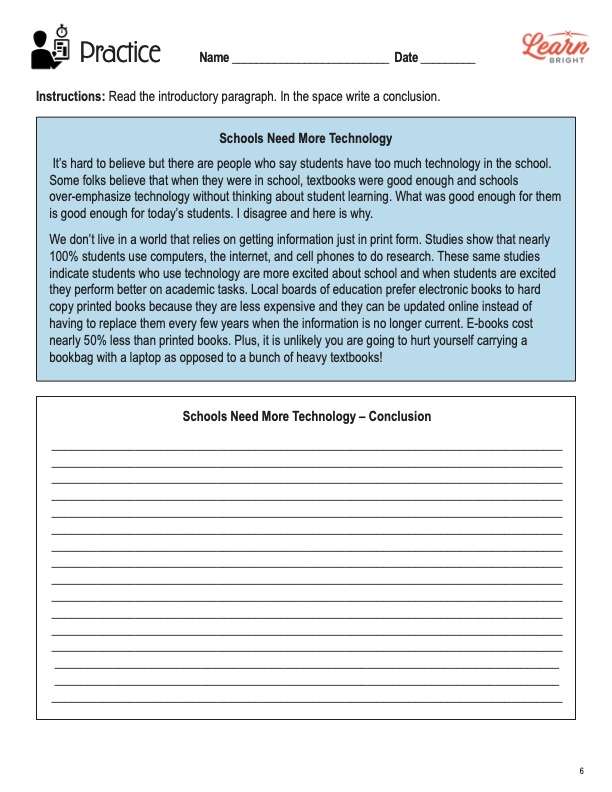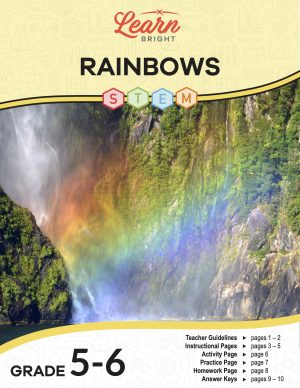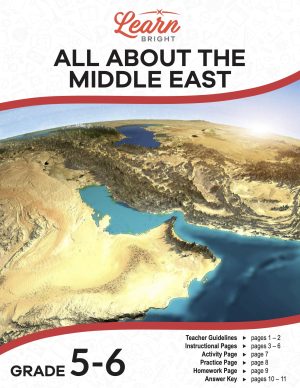Description
What our Conclusions for Informative Texts 2 lesson plan includes
Lesson Objectives and Overview: Conclusions for Informative Texts 2 teaches students how to write a solid conclusions for texts. Students will discover that the conclusion of a text summarizes the passage and reinforces information from the text. Students will learn to write conclusions specific to a particular paragraph. This lesson is for students in 6th grade.
This lesson contains two pages of content. The first page introduces students to the concept of a conclusion. Students will analyze two paragraphs about recycling. The first paragraph is an introduction paragraph. Students will discover that sometimes, people use the same starting sentence in their conclusion as they did in the introduction. Then they will learn that the conclusion closely mirrors the intro.
The second page of content presents an easy outline to follow for writing an essay. It describes what each part of the essay should include. Students will learn that conclusions should restate the thesis and summarize the argument. The three questions on the bottom half of this page will gauge students’ grasp of the lesson material.
INTRO OR CONCLUSION ACTIVITY
Students will work with a partner for the activity. You may, however, choose to have students work by themselves or put them into groups. There are six short paragraphs on the worksheet. Students will read the paragraphs and decide whether or not it belongs in the introduction (I) or conclusion (C) of an essay. They will then write out the reason for their choice on the line next to the paragraph.
WRITE A CONCLUSION PRACTICE WORKSHEET
The practice worksheet has two boxes. The first box contains a short passage of text. The second box contains blank lines. Students will read the passage, which is an introduction paragraph. Then they will write a conclusion for the text in the space provided.
CONCLUSIONS FOR INFORMATIVE TEXTS 2 HOMEWORK ASSIGNMENT
This homework assignment requires students to read an introduction and reword it into a conclusion. Then they must again reword their conclusion into their own introduction. They cannot copy the original.

